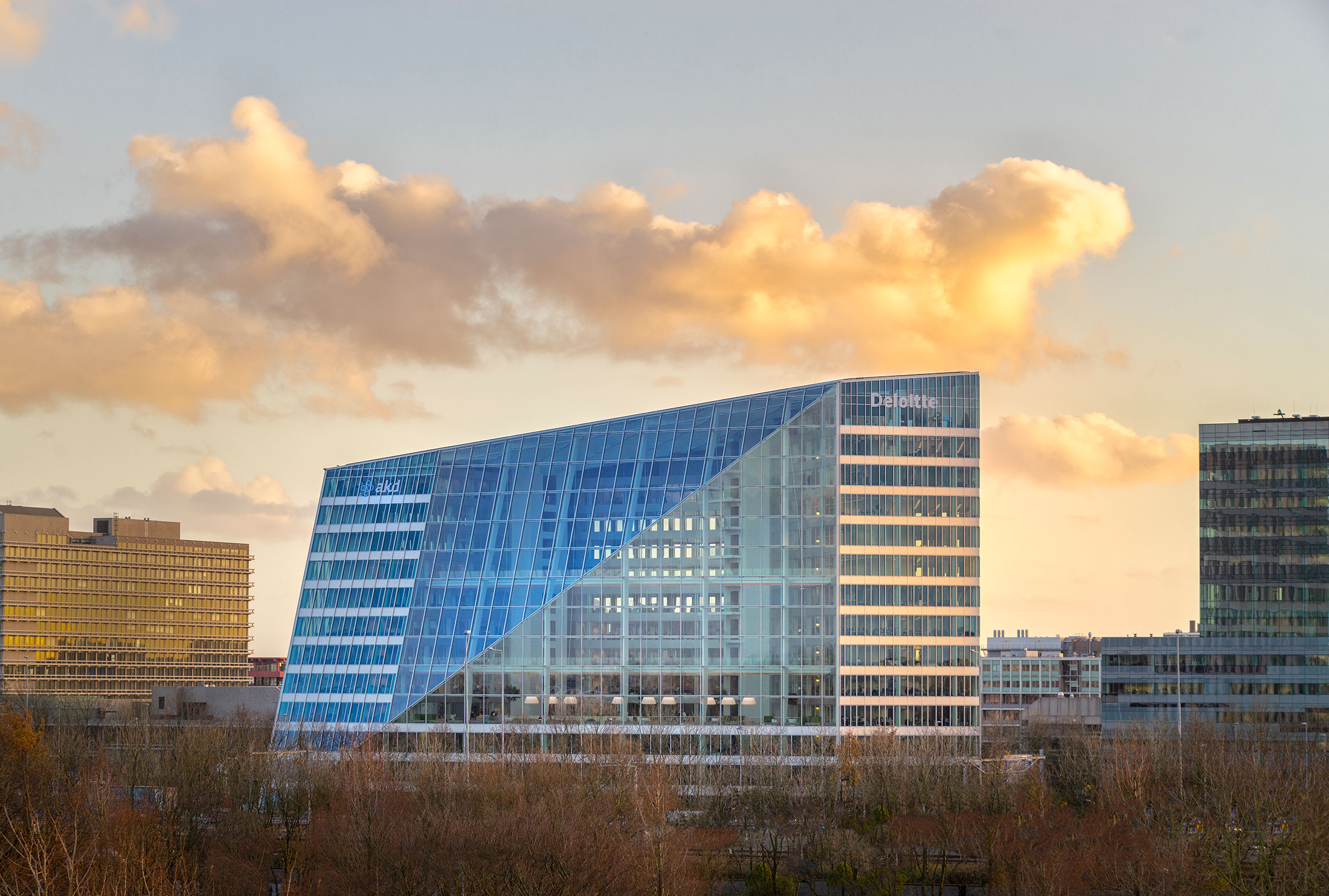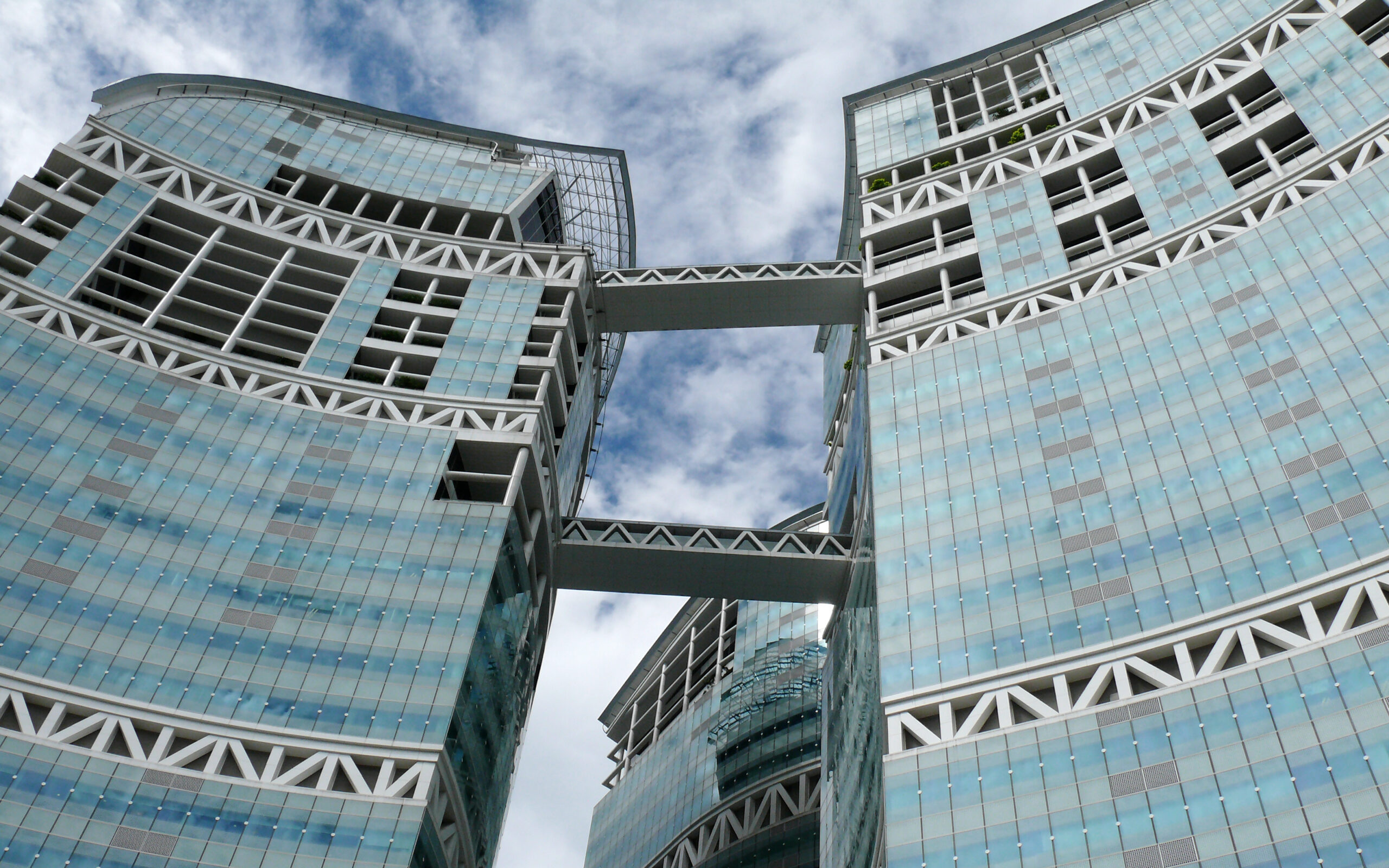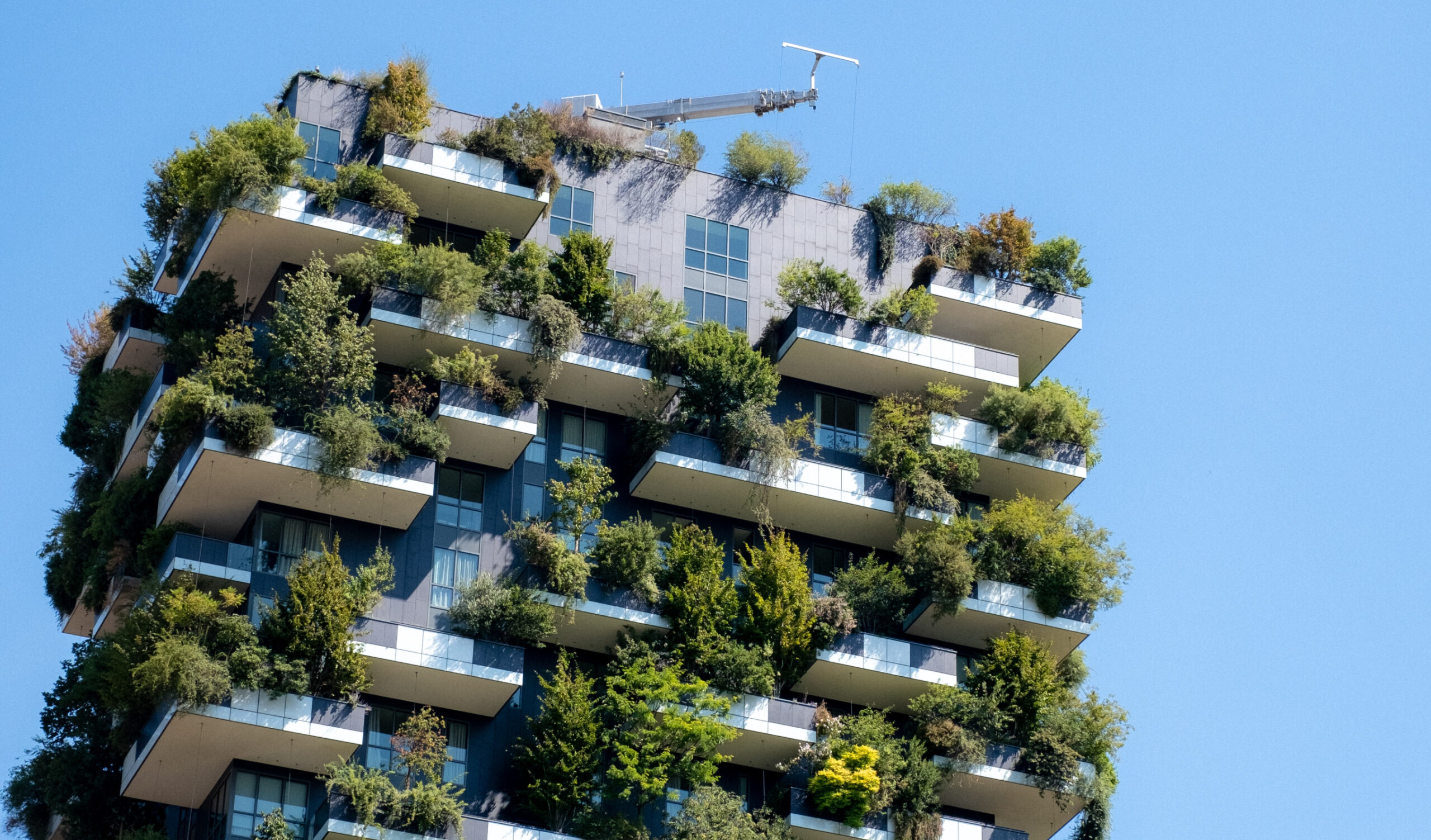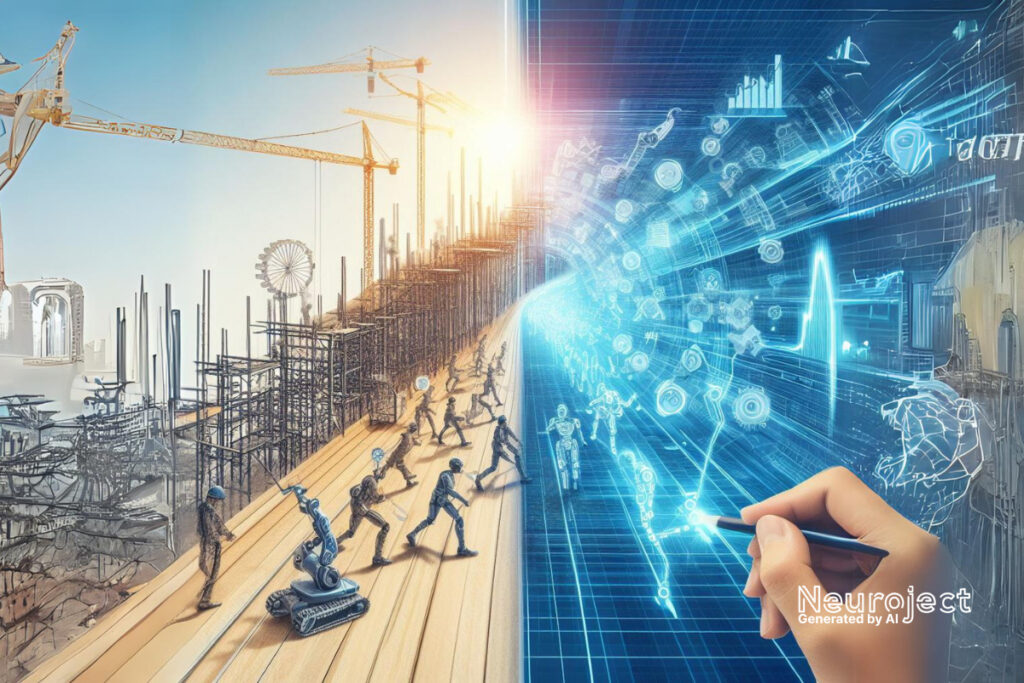In the current era where digital technology increasingly merges with traditional sectors, the advent of Smart Construction Solutions has become a game changer in the field of building and infrastructure. Smart Construction Solutions refer to the integration of advanced technologies, such as Artificial Intelligence (AI), the Internet of Things (IoT), and Building Information Modeling (BIM), into the construction process. These technologies aim to increase efficiency, reduce costs, and improve the safety, quality, and sustainability of construction projects.
In recent years, the importance of Smart Construction Solutions has significantly grown due to the increasing complexity of construction projects, as well as the rising demand for more sustainable and efficient construction practices. The construction industry is often faced with numerous challenges, including delayed project deliveries, budget overruns, safety concerns, and environmental impact. These issues highlight the inefficiencies in the traditional construction process, hence the need for smarter solutions.
The present article provides an in-depth exploration of “Smart Construction Solutions in 2024”, a rapidly evolving sector at the nexus of technology and architecture. As we navigate the complexities of the 21st century, the construction industry is experiencing a revolution fueled by technological advancements, challenging traditional practices. The adoption of smart construction solutions is not merely an option, but rather a necessity, to increase efficiency, reduce costs, and promote sustainability in the built environment.
From AI-powered design tools to IoT-connected job sites and advanced Building Information Modelling (BIM), this article delves into the latest trends and innovations reshaping the industry in 2024. Through a critical lens, it also examines the potential challenges that industry leaders, policymakers, and workers might face during this transformational journey. Whether you are a stakeholder in the construction industry, a technology enthusiast, or simply curious about the future of our built world, this insightful narrative will provide a comprehensive overview of smart construction solutions in 2024.
Table of Contents
Overview of Smart Construction Solutions
In recent years, the construction industry has undergone a profound transformation through the integration of cutting-edge technologies, collectively known as Smart Construction Solutions. This paradigm shift involves leveraging digital innovations to enhance efficiency, sustainability, and overall project outcomes. Here’s a concise overview of the key components:
1. Building Information Modeling (BIM):
At the core of smart construction is Building Information Modeling (BIM), a collaborative process that utilizes intelligent 3D models to streamline project planning, design, and execution. BIM provides a comprehensive digital representation of structures, facilitating informed decision-making across the project lifecycle.
2. Internet of Things (IoT) Integration:
Smart construction incorporates the Internet of Things (IoT), embedding sensors and devices throughout construction sites. This integration enables real-time monitoring of equipment, materials, and environmental conditions, enhancing data-driven insights and proactive decision-making.
3. Artificial Intelligence (AI) and Machine Learning (ML):
AI and ML algorithms play a pivotal role in smart construction by enabling predictive analytics, risk assessment, and automation of complex tasks. These technologies optimize project scheduling, cost estimation, and overall project management, leading to increased efficiency.
4. Robotics in Construction:
The deployment of robotics in construction activities, such as 3D printing and automated bricklaying, revolutionizes traditional building processes. Robotics enhances precision, accelerates construction timelines, and minimizes manual labor, contributing to overall project cost-effectiveness.
5. Drones and Advanced Imaging:
Drones and advanced imaging technologies provide a bird’s-eye view of construction sites, aiding in surveying, mapping, and monitoring progress. These tools enhance project visualization, improve data accuracy, and contribute to safer and more informed decision-making.
6. Cloud-Based Collaboration:
Cloud-based collaboration platforms serve as the backbone of smart construction, fostering real-time communication and seamless data exchange among project stakeholders. These solutions enhance accessibility, encourage global collaboration, and improve overall project coordination.
7. Augmented Reality (AR) and Virtual Reality (VR):
AR and VR technologies are transforming project visualization and design. By offering immersive experiences, these technologies facilitate stakeholder communication, on-site guidance, and training, thereby enhancing project understanding and reducing errors.
8. Data Security and Privacy:
As digitalization intensifies, ensuring robust data security and privacy measures becomes paramount. Smart construction solutions employ encryption protocols, cybersecurity measures, and industry best practices to safeguard sensitive project information.
9. Sustainability Integration:
Smart construction actively contributes to sustainable practices by employing tools and technologies for energy efficiency, waste reduction, and environmental impact assessment. These solutions align with green construction goals, promoting an eco-friendlier industry.
In conclusion, the era of smart construction solutions represents a holistic approach to building processes, combining digital innovation with traditional construction practices. The adoption of these technologies promises to revolutionize the industry, fostering efficiency, sustainability, and improved project outcomes.
Evolution of Smart Construction
The evolution of smart construction has been a game-changing phenomenon in the construction industry, heralding a new era of innovation, efficiency, and safety. The last decade has seen a rapid transformation in this field, underpinned by advancements in technology. From the rudimentary manual methods, we have transitioned to advanced, technology-driven processes that have revolutionized the way buildings are designed, constructed, and maintained.
The advent of Building Information Modeling (BIM) was an early milestone in smart construction. BIM enabled the creation of virtual 3D models that encapsulated all essential information about a building. This not only improved planning and design but also enhanced collaboration among various stakeholders, promoting a more coordinated and efficient construction process.
Next came the integration of the Internet of Things (IoT). With IoT devices and sensors installed at construction sites, real-time data collection became possible, facilitating predictive maintenance, reducing downtime, and increasing overall efficiency. IoT also paved the way for the development of smart buildings, equipped with systems for energy conservation, waste management, and enhanced security.

The emergence of AI and Machine Learning further transformed the construction landscape. From automating routine tasks to predicting potential structural issues, these technologies have significantly reduced human error and increased productivity. Construction robotics, from autonomous vehicles to bricklaying robots, have been increasingly deployed, drastically reducing labor-intensive tasks and improving safety.
In recent years, up to 2024, there has been an increased emphasis on sustainability in smart construction. The industry has been adopting green technologies and sustainable materials, driven by the pressing need to combat climate change. Green buildings, energy-efficient designs, and waste-minimization techniques are now at the forefront of construction practices.
Meanwhile, digital twin technology has taken smart construction to new heights. By creating a digital replica of a physical building, it allows real-time monitoring, scenario testing, and problem-solving, leading to better decision-making and optimization of building operations.
In sum, the evolution of smart construction has seen a dynamic convergence of technologies, paving the way for safer, more efficient, and sustainable construction practices. The industry’s future looks promising, with further technological advancements anticipated to push the boundaries of what’s possible in construction.
Benefits of Smart Construction Solutions
The advent of Smart Construction Solutions ushers in a new era of construction, revolutionizing traditional methods with technological innovations. These advancements offer an array of benefits such as enhanced safety, increased efficiency, and greater sustainability.
In terms of safety, smart construction introduces cutting-edge equipment and IoT-enabled devices that provide real-time hazard detection and analysis, minimizing accidents on construction sites. Drones, for example, can surveil hazardous areas, ensuring human workers’ safety. Additionally, wearable technology can monitor workers’ health conditions and send alerts in case of emergencies.
In terms of efficiency, smart construction harnesses the power of digital tools like Building Information Modeling (BIM) and AI-powered software, drastically reducing project timelines. BIM allows for optimal coordination among teams and comprehensive project visualization, eliminating errors and redundancies. AI algorithms can predict potential delays, allowing proactive measures to keep projects on track. Digitization also facilitates seamless data management, offering transparent and real-time project updates.
Regarding sustainability, smart construction promotes eco-friendly practices. Technologies such as energy-efficient equipment, green building materials, and automated waste management systems drastically reduce environmental impact. Furthermore, innovative techniques like 3D printing and prefabrication allow for precision, reducing waste and enhancing resource utilization.
In conclusion, smart construction solutions represent the future of the industry, redefining it with safer, more efficient, and more sustainable practices. The combination of advanced technologies and construction processes is a testament to the potential for continual growth and improvement in this crucial sector.
Suggested article for reading: Artificial Intelligence or AI in Construction
Smart Construction Technologies in 2024
In 2024, the construction industry is propelled by an array of smart technologies revolutionizing the way buildings and infrastructures are conceptualized, designed, and built. The Internet of Things (IoT) is at the forefront of these innovations, enabling real-time monitoring of construction sites. IoT devices such as sensors and beacons collect vital data on site conditions, equipment status, and worker safety, improving efficiency and minimizing risks.
Artificial Intelligence (AI) and Machine Learning (ML) applications have also permeated the industry, analyzing the large volumes of data generated by IoT devices to inform decision-making processes. These technologies facilitate predictive maintenance, hazard prediction, and even automated project management. For example, AI algorithms can analyze patterns to forecast machinery breakdowns, while ML models can learn from past incidents to anticipate potential safety hazards.
Suggested article for reading: Machine Learning in Construction

Building Information Modeling (BIM) is another groundbreaking technology that significantly impacts the industry. BIM provides 3D models that offer an interactive representation of a building, enabling architects, engineers, and construction teams to collaboratively plan, design, construct, and manage buildings more effectively. It enhances coordination, reduces errors and rework, and improves overall project timelines.
Drones and robotics have also found their place in smart construction. Drones capture aerial images of construction sites, monitor work progress, and identify potential safety issues. Robotics, on the other hand, performs repetitive or dangerous tasks such as bricklaying, concrete pouring, and high-elevation work, thereby increasing productivity while enhancing worker safety.
In conclusion, these smart construction technologies have engendered a new era in the industry, allowing for more accurate planning, efficient execution, and safer construction sites. The synergy of these innovations ensures that the construction industry will continue to evolve and improve in the years to come.
Key Technologies in Smart Construction (2023)
The construction industry is experiencing a profound transformation driven by the integration of cutting-edge technologies. In 2023, several key technologies are shaping the landscape of smart construction, enhancing efficiency, safety, and sustainability. Here are the pivotal technologies at the forefront of this revolution:
1. Building Information Modeling (BIM)
Building Information Modeling remains a cornerstone in smart construction. BIM involves creating intelligent 3D models that provide a comprehensive digital representation of a construction project. It facilitates collaboration, improves decision-making, and spans the entire project lifecycle.
2. Internet of Things (IoT)
The Internet of Things is revolutionizing construction sites by connecting devices and sensors. IoT enables real-time monitoring of equipment, materials, and environmental conditions. This data-driven approach enhances project visibility, improves resource management, and contributes to overall efficiency.
3. Artificial Intelligence (AI) and Machine Learning (ML)
AI and ML algorithms play a crucial role in smart construction. These technologies enable predictive analytics, risk assessment, and automation of various tasks. AI and ML optimize project management, scheduling, and decision-making, leading to improved outcomes.
4. Robotics
Robotics is transforming construction processes with automated solutions. From 3D printing to automated bricklaying, robotics enhances precision, accelerates construction timelines, and reduces manual labor. Robotic technologies contribute to cost-effectiveness and efficiency.
5. Drones and Advanced Imaging
Drones and advanced imaging technologies provide invaluable insights into construction sites. These tools assist in surveying, mapping, and monitoring project progress. Drones enhance safety, accuracy, and overall project visualization.
6. Cloud-Based Collaboration
Cloud-based collaboration platforms serve as the backbone of smart construction. They enable real-time communication, data sharing, and collaboration among project stakeholders. Cloud solutions enhance accessibility, streamline workflows, and support global collaboration.
7. Augmented Reality (AR) and Virtual Reality (VR)
AR and VR technologies are enhancing project visualization and design. These immersive technologies offer stakeholders realistic experiences, improving communication, design validation, and on-site decision-making.
8. 5G Technology
The implementation of 5G technology is a game-changer in smart construction. It provides faster and more reliable communication, enabling real-time data transfer, augmented reality applications, and enhanced connectivity across construction sites.
9. Blockchain
Blockchain technology is gaining traction for secure and transparent data management in construction. It enhances trust and security in transactions, document management, and collaborative processes.
10. Sustainability Technologies
Technologies focused on sustainability, such as energy-efficient systems, environmental impact assessment tools, and waste reduction solutions, are integral to smart construction practices. These technologies align with green construction goals and promote eco-friendly building practices.
As smart construction continues to evolve, the integration of these key technologies is crucial for staying competitive, improving project outcomes, and contributing to the industry’s overall advancement.
Suggested articles for reading:
The Importance of Drones in Construction
Construction Robots in 2024: A Comprehensive Guide
Smart Construction: Case Studies
Over the past decade, the advent of smart construction has revolutionized the building industry, promoting efficiency, safety, and sustainability. A few exemplary case studies offer a glimpse into its practical application and effectiveness.
The Edge
The world’s most sustainable office building, known as the Edge, is situated in Amsterdam. It’s certified by the Building Research Establishment Environmental Assessment Method (BREEAM) for its impressive eco-credentials. This recognition comes in part from the building’s integrated smart technologies. A network of Internet of Things (IoT) sensors throughout the structure monitors and adjusts lighting and temperature, optimizing energy use and creating an adaptive workspace.
At the heart of the Edge is a smartphone app developed with the building’s main tenant, the consulting firm Deloitte. The application serves as a personal assistant, connecting you from the moment you wake up. It integrates with your schedule, ensuring the building is ready for your arrival. Notably, the Edge recognizes your car upon arrival and promptly directs you to a parking spot.
Instead of assigned desks, the Edge adopts a flexible approach. The app allocates workspaces based on your schedule for the day, offering choices like sitting desks, standing desks, work booths, meeting rooms, balcony seats, or “concentration rooms.” As you navigate through the spaces, the app, in conjunction with the IoT sensors, tweaks the environment according to your preferences for light and temperature.
Suggested article for reading: Sensors in Construction Ultimate Guide 2024
The Edge achieved the highest sustainability score ever awarded by BREEAM, a staggering 98.4 percent. It’s not just about being the greenest building in terms of its minimal carbon footprint; the Edge also champions a new way of working. The Dutch term for this is ‘het nieuwe werken’, translating roughly to ‘the new way of working’. This concept uses information technology to shape both the nature of work and the spaces in which it occurs.
The Edge stands as a monument of resource efficiency in the traditional sense—its solar panels create more electricity than the building uses. But the concept goes beyond energy; it’s about optimizing human resources as well. The application of smart construction in this building not only reduced carbon emissions but also significantly increased worker productivity. Hence, the Edge presents a promising model for future sustainable development and innovation in the workspace.
Suggested article for reading: Construction Monitoring Solutions

Fusionopolis 2
In Singapore, a groundbreaking project known as Fusionopolis Two (F2) showcases the integration of Building Information Modeling (BIM) with smart construction. This approach is becoming a hallmark of modern, efficient building design.
The project was designed and developed by JTC Corporation (JTC) to meet the specific research needs of Singapore’s Agency for Science, Technology, and Research (A*STAR). The building was constructed to adhere to stringent requirements for cleanroom facilities, demanding a vibration-sensitive and pollutant-free environment. BIM technology played a critical role in achieving these demands, providing a comprehensive 3D model of the building. This enabled effective planning, design, construction, and eventual management of the infrastructure, resulting in a markedly faster and more efficient building process with fewer errors.
F2’s layout is also designed to foster greater interaction and deepen scientific collaborations through the use of integrated and shared facilities. The network of A*STAR’s research institutes, along with other public and private research bodies at Fusionopolis, is indicative of the government’s commitment to transforming Singapore into a knowledge-based, innovation-driven economy. This commitment is further bolstered by the robust biomedical sciences expertise built up at Biopolis.
Both F2 and Biopolis are emblematic of Singapore’s aspiration to create a symbiotic relationship between the public and private sectors. Through projects like these, the goal is to generate impactful economic and societal outcomes for Singapore. The successful execution of the F2 project, with the use of BIM and smart construction, serves as a blueprint for future projects that seek to balance efficiency, innovation, and sustainability

Bosco Verticale
another fascinating example of smart construction can be seen in the project of “Bosco Verticale” (Vertical Forest) in Milan, Italy. This unique residential project, designed by Stefano Boeri Architetti, redefines the concept of urban living through a blend of architecture, design, and technology.
The twin towers of Bosco Verticale are living, breathing buildings that host more than 20,000 plants, including trees, shrubs, and perennials, on their facades. The choice of plant species, as well as their arrangement, was carefully planned and adjusted based on the buildings’ orientation and height to ensure optimal microclimate conditions.
To maintain this vertical forest, a sophisticated irrigation system was developed, making use of recycled water from the building. This also helped to mitigate the urban heat island effect, improving the microclimate and saving energy on air conditioning. Additionally, the vegetation provides a natural filter for sunlight and absorbs CO2 and dust particles, contributing to a healthier living environment.
At the core of Bosco Verticale is a smart home automation system that enhances the comfort and sustainability of residences. It enables the control of lighting, temperature, and ventilation based on the specific needs of the inhabitants and the current weather conditions.
This case study underscores the potential of smart construction in creating sustainable, efficient, and life-enhancing environments. Bosco Verticale is not just a building; it’s a living ecosystem that evolves, demonstrating how smart construction can seamlessly integrate technology, nature, and architecture to redefine the future of urban living.

Challenges and Limitations
Implementing smart construction solutions, while beneficial, is not without its array of challenges and limitations. A prominent issue lies in the significant initial costs, an aspect often prohibitive for smaller companies. These technologies often require a considerable investment in advanced hardware, and software, as well as in training the workforce to adequately handle these new tools. Further, upkeep costs and the potential need for regular upgrades can add financial strain to the already hefty initial investment.
Technical issues represent another significant challenge. The digitization of construction operations relies heavily on complex IT infrastructures. Any glitches, downtimes, or cybersecurity breaches in these systems can lead to substantial losses and delays. Ensuring constant functionality, data integrity, and system security thus becomes a critical, yet challenging endeavor.
Moreover, smart construction technologies necessitate a robust and reliable internet connection, a requirement not always feasible in remote or developing areas. Hence, geographical disparities can limit the effective adoption of these solutions, thereby curbing their universal applicability.
Another hurdle is the resistance to change often exhibited by industry professionals. Construction, being a traditionally labor-intensive sector, harbors a workforce that might be skeptical or apprehensive about incorporating new technologies into their routine practices. This cultural resistance can slow down the adoption process, leading to a lack of optimization of the potential benefits these technologies could bring.
Lastly, regulatory and legal challenges can act as roadblocks. As smart construction often entails the use of emerging technologies like drones, AI, and robotics, current regulations may not adequately cover their use, or worse, outright prevent their deployment. This necessitates not only legal reform but also the establishment of new safety standards and guidelines within the industry.
In conclusion, while smart construction holds significant promise for enhancing efficiency and safety, it is crucial to acknowledge and address these challenges to fully leverage its potential benefits.
Integration with Building Information Modeling (BIM)
In the realm of smart construction, the integration of advanced technologies with Building Information Modeling (BIM) stands as a pivotal strategy, unlocking new possibilities for efficiency, collaboration, and informed decision-making throughout the project lifecycle.
1. Seamless Data Exchange
Integration with BIM facilitates seamless data exchange among various technologies and project stakeholders.
BIM serves as a centralized platform, ensuring that data from IoT devices, drones, and other sources can be harmoniously incorporated into a unified digital model.
2. Improved Collaboration
BIM integration enhances collaboration by providing a common data environment for all project participants.
Teams can collaborate in real-time, sharing updated information, and ensuring everyone works with the latest data.
3. IoT Sensors and BIM
Integrating IoT sensors with BIM extends the capabilities of data capture on construction sites.
Real-time monitoring of equipment conditions, environmental factors, and material status can be visualized within the BIM model, enabling proactive decision-making.
Suggested article for reading: Sensors in Construction
4. AI and Machine Learning Integration
AI and machine learning algorithms can leverage BIM data for predictive analytics and optimization.
By analyzing historical project data stored in BIM, AI algorithms can provide insights into potential risks, project timelines, and resource allocation.
Suggested article for reading: Machine Learning in Construction
5. Robotics and BIM
Robotics technologies, such as automated machinery and 3D printing, can be integrated with BIM to enhance precision and automate construction processes.
BIM provides the digital foundation for robotic systems to understand and execute tasks efficiently.
Suggested article for reading: Construction Robots in 2024
6. Cloud-Based Collaboration with BIM
Cloud-based collaboration tools integrated with BIM ensure that project stakeholders have simultaneous access to the latest BIM models and project data.
This cloud integration fosters a collaborative environment, allowing global teams to work together seamlessly.
7. AR and VR Integration
Augmented Reality (AR) and Virtual Reality (VR) technologies can be integrated with BIM for enhanced project visualization.
Stakeholders can immerse themselves in the BIM model, experiencing a virtual walkthrough of the construction site before it’s built.
8. 5G Technology and BIM
The high-speed and low-latency capabilities of 5G technology support real-time collaboration and data transfer with BIM.
5G enhances the accessibility and responsiveness of BIM applications, especially in large-scale and geographically dispersed projects.
9. Blockchain for Data Security
Blockchain integration with BIM addresses data security concerns by providing a tamper-resistant and transparent ledger.
This ensures the integrity of data within the BIM model, fostering trust among project participants.
10. Sustainability Analytics with BIM
Technologies focused on sustainability, such as energy analysis tools and environmental impact assessments, can be integrated with BIM.
BIM serves as a comprehensive platform for considering sustainability factors in the design, construction, and operation phases.
The integration of these technologies with BIM creates a synergistic ecosystem, where the collective power of data, collaboration, and innovation propels smart construction projects toward greater efficiency, cost-effectiveness, and sustainability.
Regulatory Landscape and Standards in Smart Construction (2023)
The deployment of smart construction solutions is subject to a dynamic regulatory landscape that seeks to balance technological innovation with safety, sustainability, and ethical considerations. In 2023, several regulatory frameworks and standards shape the implementation of smart construction practices.
1. Building Codes and Standards
Building codes and standards continue to be the cornerstone of construction regulations, ensuring that smart construction adheres to established safety and structural integrity requirements.
As smart technologies evolve, regulatory bodies update codes to address the integration of IoT devices, sensors, and other innovations.
2. Data Privacy and Security Regulations
With the increased use of sensors, IoT devices, and data-driven technologies, regulations governing data privacy and security are paramount.
Compliance with data protection laws ensures that sensitive information collected from construction sites is handled responsibly and ethically.
3. Environmental and Sustainability Standards
Regulatory bodies are increasingly emphasizing sustainability in construction practices.
Smart construction solutions must align with environmental standards, promoting energy efficiency, waste reduction, and the use of eco-friendly materials,
4. Integration with Existing Construction Regulations
Smart construction technologies must seamlessly integrate with existing construction regulations to ensure compatibility and avoid conflicts.
Regulatory bodies are working to update guidelines to accommodate the unique aspects of smart construction projects.
5. Certification Programs for Smart Technologies
Certification programs for smart construction technologies and solutions are emerging to establish industry benchmarks.
These programs validate the reliability, safety, and performance of smart construction tools, giving stakeholders confidence in their adoption.
6. Cybersecurity Regulations
Given the interconnected nature of smart construction, regulations addressing cybersecurity risks are becoming more prevalent.
Standards for securing digital infrastructure and communication channels are essential to safeguard against cyber threats.
7. Interoperability Standards
Interoperability standards are crucial for ensuring that different smart construction technologies can seamlessly work together.
These standards promote collaboration among diverse stakeholders by facilitating the exchange of information between various systems.
8. Health and Safety Regulations
Smart construction solutions should comply with health and safety regulations to protect workers and stakeholders.
Regulatory frameworks are evolving to address the integration of technologies that enhance on-site safety and reduce risks.
9. Government Initiatives and Funding Programs
Governments worldwide are introducing initiatives and funding programs to encourage the adoption of smart construction technologies.
These programs may come with specific requirements and standards that projects must meet to qualify for support.
10. International Standards for IoT and Connectivity
The rise of IoT in smart construction necessitates adherence to international standards for connectivity and device interoperability.
Standards bodies are actively developing guidelines to ensure a cohesive and globally compatible IoT ecosystem.
Navigating this complex regulatory landscape requires stakeholders in smart construction to stay informed about evolving standards, collaborate with regulatory bodies, and prioritize compliance to ensure the responsible and effective implementation of innovative technologies in the construction industry.
Adoption and Implementation Strategies for Smart Construction (2023)
The successful integration of smart construction solutions requires careful planning, strategic considerations, and a comprehensive approach to adoption. In 2023, industry professionals are employing the following key strategies to facilitate the seamless adoption and effective implementation of smart construction technologies:
1. Strategic Planning and Roadmapping
Begin with a thorough analysis of project requirements and objectives.
Develop a smart construction roadmap that aligns with overall project timelines and milestones.
Prioritize technologies based on their impact on efficiency, cost-effectiveness, and project goals.
2. Stakeholder Collaboration and Training
Foster collaboration among all stakeholders, including architects, engineers, contractors, and technology providers.
Conduct training programs to familiarize teams with smart construction technologies and their integration into existing workflows.
Ensure that all team members understand the benefits and implications of the adopted technologies.
3. Pilot Projects and Proof of Concept
Implement pilot projects to test the feasibility and effectiveness of chosen smart construction solutions.
Use proof of concept studies to evaluate the real-world performance and address any challenges before full-scale deployment.
Adjust strategies based on lessons learned during the pilot phase.
4. Interoperability Planning
Prioritize interoperability to ensure that different smart construction technologies can seamlessly work together.
Choose solutions that adhere to industry standards and can integrate with existing tools and systems.
Collaborate with technology providers to address interoperability challenges.
5. Scalability Considerations
Assess the scalability of selected technologies to accommodate the project’s growth and future needs.
Choose solutions that can easily scale up or down based on project requirements.
Plan for flexibility to integrate additional technologies as they emerge.
6. Cybersecurity Integration
Prioritize cybersecurity from the outset to protect sensitive project data and digital infrastructure.
Implement robust security measures, including encryption, access controls, and regular security audits.
Stay informed about evolving cybersecurity threats and update strategies accordingly.
7. Regulatory Compliance
Stay abreast of regulatory requirements and standards relevant to smart construction.
Design adoption strategies that prioritize compliance with building codes, data privacy laws, and other relevant regulations.
Collaborate with regulatory bodies to address any uncertainties or gaps in compliance.
8. Continuous Monitoring and Optimization
Implement monitoring systems to track the performance of smart construction technologies in real-time.
Regularly assess the impact on project timelines, costs, and overall efficiency.
Optimize strategies based on ongoing feedback and evolving project requirements.
9. Vendor and Technology Selection
Conduct thorough research when selecting technology vendors, ensuring they have a proven track record and align with project goals.
Choose technologies that offer long-term support, updates, and compatibility with emerging innovations.
Consider the reputation and reliability of technology providers.
10. Community and Public Engagement
Engage with local communities and the public to address concerns and foster understanding of smart construction practices.
Communicate the benefits, such as reduced environmental impact and improved safety, to gain community support.
Seek feedback and address any misconceptions about the adoption of new technologies.
By strategically addressing these key considerations, construction industry professionals can navigate the complexities of adopting and implementing smart construction solutions, ensuring a successful and transformative integration of technology into the built environment.
Future Trends in Smart Construction
As we advance further into the 21st century, the rapid growth of technology continues to play a transformative role in every sphere of our lives, including the construction industry. The smart construction sector, as we know it in the early 2020s, is likely to be revolutionized by several emerging trends, driving efficiency, safety, and sustainability.
The first notable trend is the growing use of Building Information Modeling (BIM) which not only allows designers and contractors to visualize a construction project digitally before it’s built but also serves as a collaborative tool throughout the project lifecycle. Coupled with advances in Artificial Intelligence and Machine Learning, we can expect smarter BIM applications with predictive capabilities, contributing to improved decision-making and project execution.
Further, we foresee an increased integration of Internet of Things (IoT) devices in construction processes. IoT-enabled equipment and wearables will likely be standard, providing real-time data on various aspects, from tracking resource utilization to ensuring workers’ safety. These devices will seamlessly connect with cloud-based platforms, driving data-driven decisions and project management.
Another significant trend will be the adoption of autonomous and robotic technology. The advent of AI-powered autonomous machinery and drones will facilitate tasks like surveying, inspection, and materials handling, reducing human error and improving overall site safety.
Additionally, the emphasis on sustainability will drive the growth of green and energy-efficient construction practices. Smart materials, equipped with self-healing or energy-generating capabilities, will see increased adoption. Moreover, digital twins will play a crucial role in optimizing building performance and energy usage, contributing to a more sustainable built environment.
Lastly, Virtual Reality (VR) and Augmented Reality (AR) will revolutionize the way projects are presented and reviewed. These immersive technologies will enable stakeholders to explore and manipulate models in real-time, leading to more effective collaboration and design improvements.
Overall, as we move beyond 2024, we can expect these trends to converge, creating a smarter, more interconnected, and sustainable construction industry, and revolutionizing the way we design, build, and maintain our built environment.
Conclusion
In conclusion, the future of smart construction holds immense potential and promise. The interplay of sophisticated technologies such as AI, IoT, VR, AR, autonomous machinery, and the use of digital twins will form the new cornerstone for the construction industry, pushing the boundaries of innovation and operational efficiency. The trends discussed here are not just future predictions but are progressively becoming a part of the construction landscape, creating a pivotal shift in how we approach construction.
We are witnessing a transformation that extends beyond the adoption of new tools and techniques; it’s about a fundamental reshaping of the industry’s dynamics. The integration of these advanced technologies into the construction processes will facilitate a new level of collaboration, communication, and coordination. We will witness not only increased productivity and reduced costs but also enhanced safety standards and minimized environmental impacts.
However, to fully embrace and harness these advancements, the industry will need to navigate some critical challenges. Among these are the need for reskilling the workforce, ensuring cybersecurity, creating regulations that can keep pace with rapidly evolving technologies, and fostering an organizational culture that welcomes change and innovation.
Nevertheless, the transformative power of these technologies is undeniable. As we progress further into the decade, smart construction will become an essential determinant of a project’s success. The convergence of these technologies will deliver more intelligent, efficient, resilient, and sustainable construction practices, redefining the industry as we know it.
In a broader societal context, these developments have the potential to shape our built environment, reflecting our collective aspirations for more sustainable, inclusive, and smart cities. The future of smart construction is not only about innovative technology applications but also about creating meaningful and lasting changes to our living spaces, thus enhancing the quality of life for everyone. As we look toward the future, the smart construction industry will undoubtedly play a crucial role in building a sustainable, interconnected, and resilient world.
Suggested article for reading:
Lean Construction Principles and Practical Examples
Top 7 Sustainable Architecture Projects
Resources:
constructionplusasia.com | Bloomberg | ZinCo Green Roof
For all the pictures: freepik | Pexels




